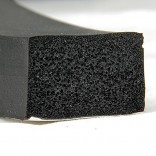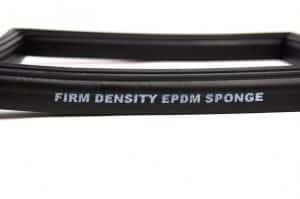Doug Sharpe
President of Elasto Proxy
Here in the northern hemisphere, the nights grow longer and the temperatures colder. In Canada, where Elasto Proxy is headquartered, the snow will arrive before December 21, the first day of winter. For building managers and maintenance personnel, the time to insulate doors and seal windows is now. Weatherstripping helps to stop air leaks, increasing occupant comfort and saving heating costs. That’s not all that that rubber weather strip can do, however.
In the southern hemisphere, maintenance crews are preparing for summer temperatures and higher cooling costs. By filling gaps and plugging leaks, sealing and insulation prevents air conditioning from escaping via drafty doors and windows. During our own summertime in the northern hemisphere, we share these same concerns. All year round and across the seasons, it’s important to protect against precipitation, too. Standard weatherstripping is available, but sometimes a custom solution is required. That’s where custom weatherstripping comes in.
How Weatherstripping Works
Weather stripping is installed between two surfaces to prevent the flow of gases or liquids. In outdoor applications, the gas is usually air and the liquid is usually water. Static seals are used when there’s no relative motion between mating surfaces, such as the windows in a skyscraper. Dynamic seals are recommended when there’s motion or movement between two sealing surfaces, such as the front door and door frame in the entrance to an office building.
Standard weatherstripping is suitable for static environments, and can be supplied with an adhesive backing for ease of installation. Closed cell foams made of a medium-density neoprene are a popular choice, and provide both oil and aging resistance. Rubber weather strip that’s made of other materials, such as silicone or EPDM, are also available. For dynamic sealing and environments with changing weather conditions, compound selection is critical and a custom-fabricated seal may be required.
The Case for Custom Fabrication
Some manufacturers use off-the-shelf weather stripping to seal gaps. Often, these materials are mainly fillers that form a static seal. Since they’re not meant for dynamic sealing, however, standard weather strip may demonstrate poor compression set recovery with repeated opening and closing. That’s true not just for commercial doors, but also for car doors and the doors to electronic enclosures. Winter will soon be upon us here in Canada, but a sealing challenge from several summers ago comes to mind.
When a cold-weather manufacturer needed to supply electronic highway signs to a warm-weather customer, the supplier learned that the standard weather stripping on the metal enclosures couldn’t withstand the summer sun. That’s when the manufacturer asked Elasto Proxy for a custom-fabricated sealing solution, and we delivered high-quality rubber seals that were used to retrofit hundreds of cabinets. The supplier kept the highway contract, and the electronics inside the enclosures stayed dry.
How Can We Help You?
Do you have questions about rubber weatherstripping for doors, windows, or HVAC hatches? For 25 years, Elasto Proxy has been solving sealing and insulation challenges in a variety of industries, including construction, automotive, and electronics. By listening to all of your application requirements and analyzing all of your needs, our solutions providers can help.
Please contact us for more information, or join the conversation on our social media channels. Look for a post with a link to this blog entry on LinkedIn, Facebook, Google+, and Twitter. Elasto Proxy has a YouTube channel, too. Finally, please subscribe to our free e-newsletters. They’re a great source of information delivered right to your email inbox, and they provide links to blog entries like this one.










